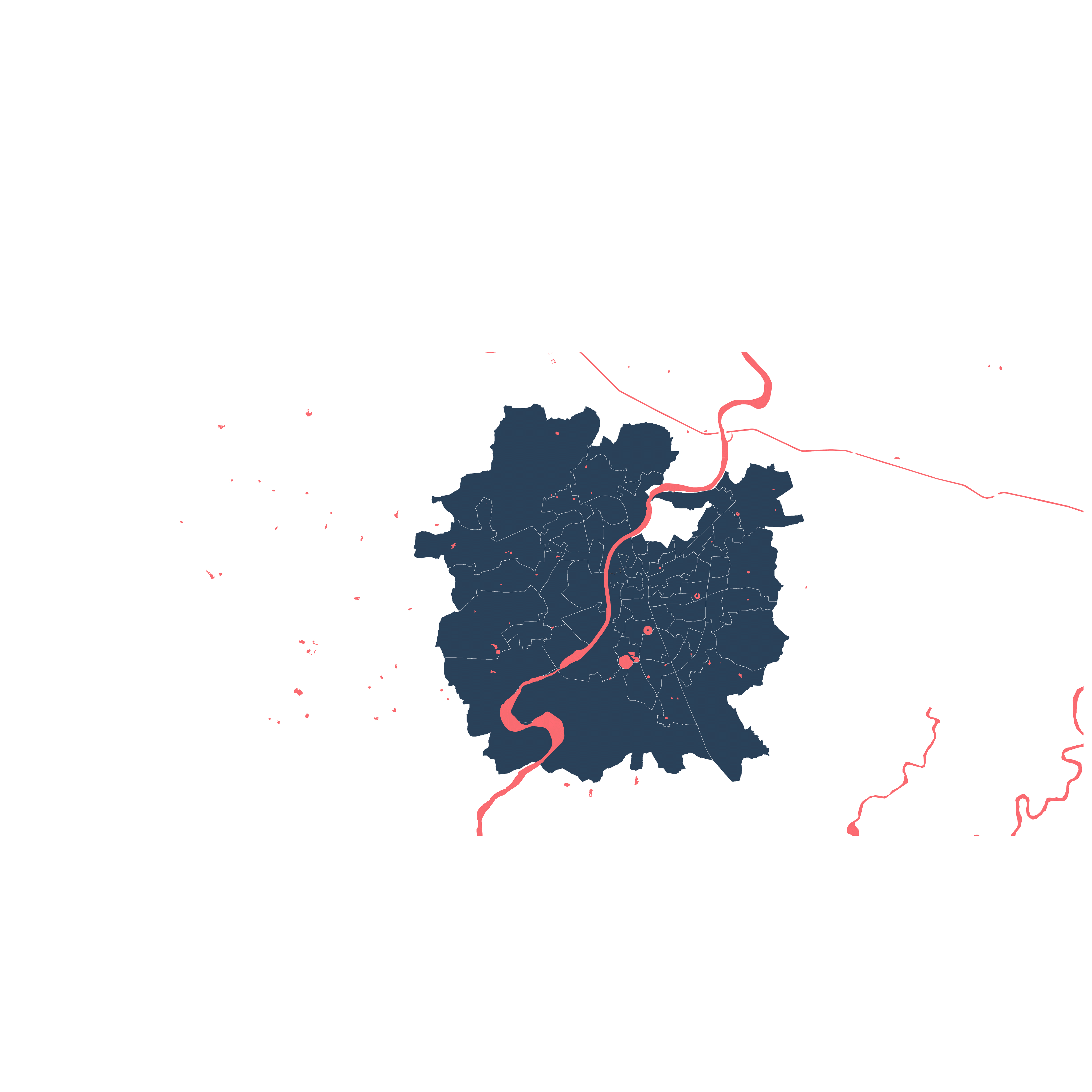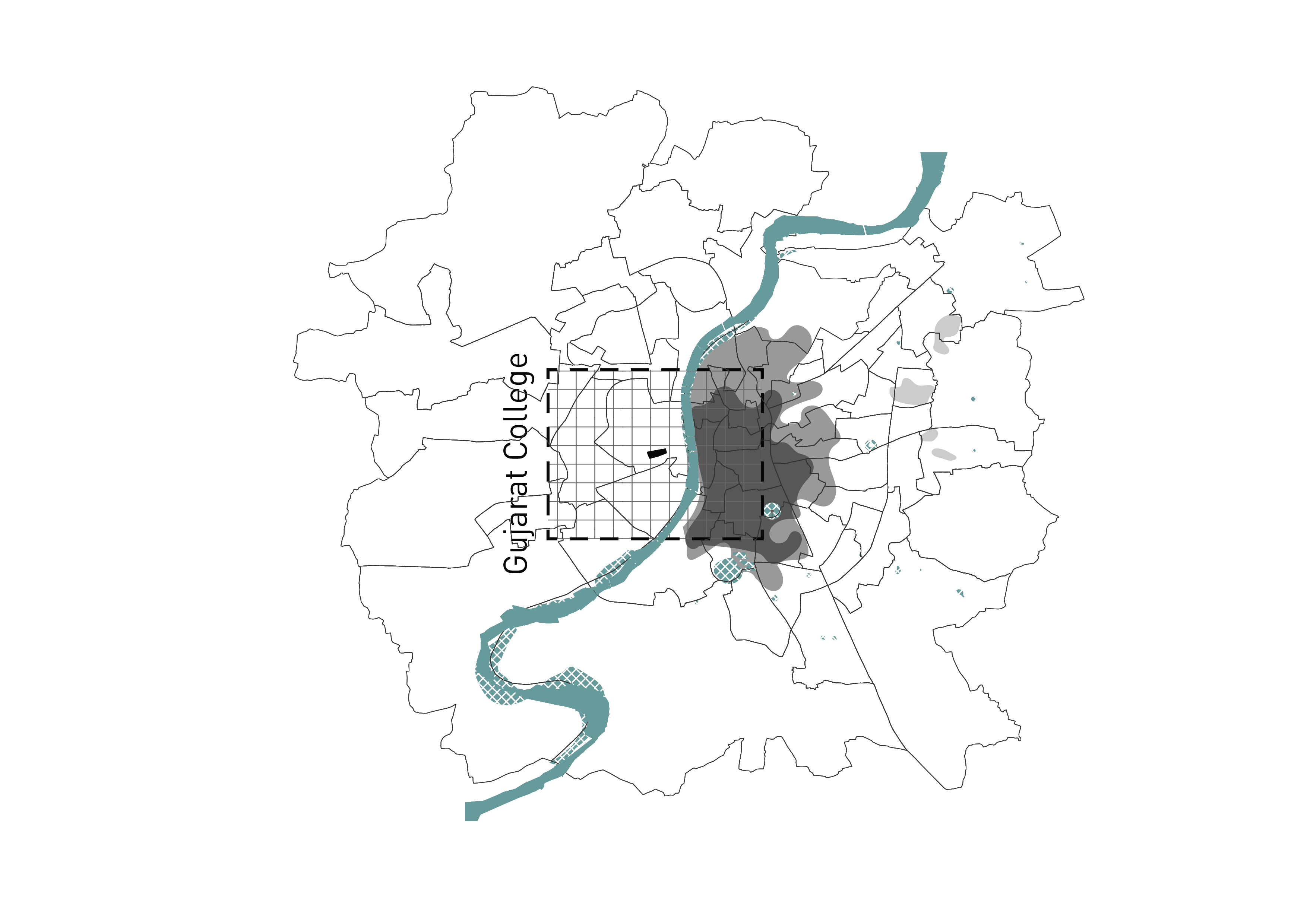Simultaneous Stories So Far...
Urban Assemblies: the vacancy Phenomenon
Greenbelt of Ahmedabad
Planning process byproduct

Story so far

Towards Transitional Learning
Re-imagining educational spaces by focussing on overt mechanisms and multiple forms of learning that are not just limited to the school building
Emergence of Educational Institutes

The university area is located on the western side of the city and has been reserved for educational purposes which include expansion of existing universities or creation of new ones. These are consolidated chunks of land with the university area as the center.

Ahmedabad has a rich history of formal education since 1935, when Ahmedabad Education Society was set up and 700 acres of agricultural land was purchased. Now it is subdivided and sold to private entities and the remaining spaces which are reserved for educational purposes have become privatized and inaccessible.


The project aims to integrate these institutional spaces through a network by bridging gaps and inaccess that currently exist in the form of compound walls and gates. Therefore, reimagination of the wall as a space is done where access to education to the inbetween spaces is made quitable, and not just dependent on the economic structures.

The undefined, loosely organized, vague space that exists within the city holds the potential to re-imagine ways for its future appropriation. The cause of vacancy in Ahmedabad is a resultant of multiple factors that interconnect across different types of urban processes. For example, the land holdings by educational Trusts for institutions resulted in large vacant lands which are currently in a developmental limbo.
In the case of institutional reserves, the nature of vacancy is transient. It can serve as an entry point towards radical interventions that imagine alternative ways of learning during this ‘In-Between’ phase of vagueness. When schools and universities are temporarily closed due to COVID, how do you engage communities to learn and expand where and how learning can take place?


The project builds on the need to subvert the existing system of education and increase the interaction of institutional spaces with the city.
There are different means to learn that can happen through – observation, play, participation, engagement, unintended encounters where there is potential of learning something new without realizing what has been learnt. Therefore, this project is an attempt to take a step towards such forms of implicit and transitional learning to expand where and how education can take place.


It intervenes on the transitional space between the public and the private, which currently exists as a wall and re-imagines it as a space with strategic accesses to enable people to spill differently into the boundaries of institutional space. The rationale behind creating a public space through plug-ins in an arcade is to spread learning spaces throughout the city that currently exist in a consolidated space concentrated in the university area of Ahmedabad.
The project builds an open relationship of institutional land with the city.
Strategy 1 : Plug-ins in an Arcade
-
Consolidated to dispersed
-
Network of educational spaces
-
Arcade with conditional access to institutions
Dispersing the educational spaces towards the edges becomes necessary to allow open access. This will help to provide learning on the go. For instance – within these arcades situated in transitional spaces, display of work/open exhibitions can happen which invoke curiousity in minds of people and expose them to new ideas. And by extending the arcade inside the boundaries of institutions, larger area of land becomes available to spill out the spaces for encounters which take place inside the institutitons.


Building connections - The route of arcade comes from connecting the focal points of institutional reserves.
Strategy 2 : Network of vacant and potential spaces
-
Bridging the missing links
-
Providing access to larger grounds
-
Information kiosks
It is important to link the potential and vacant spaces within the institutional framework. Hence, connections are established through a trail which provides access and information to reach these spaces to hold temporary events. As some of these spaces are not visible from the arcades, wayfinding kiosks become important.


Identification of potential and vacant institutional grounds for temporary events
Strategy 3 : Incremental growth
The project shall begin by identifying key areas which will serve as an entry point from where the arcades will start to connect. These key areas will serve as pause points in the arcade where some have open access to institutions and some have conditional access. Eventually, a network of educational spaces will be formed.

Phase 1
Phase 2
Phase 3
To demonstrate the project, three varying conditions have been selected.

1
2
3





/Opening to the Main Street/

/Outdoor guided tour managed by LD museum/
/Exhibition space/
The project aims to have multiplicity of function in institutional land. The solution can only be the disintegration of the school building as a specific place, intended exclusively for a specific function. It is a question of identifying its essential 'purpose', which must be maintained intact and multiplied, and its non-essential orbit which can be broken up and dispersed.